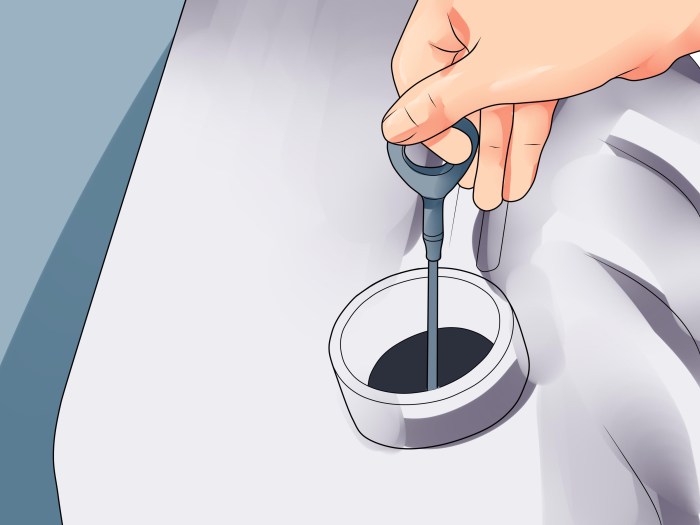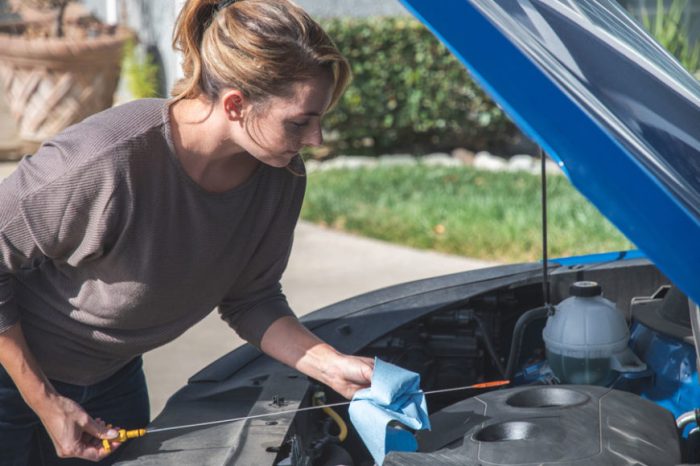How to check car oil is a crucial skill for any vehicle owner, as it plays a vital role in maintaining your car’s overall health and performance. Regularly monitoring your oil levels helps prevent engine damage, enhances fuel efficiency, and ensures a smoother ride. Neglecting this simple task can lead to costly repairs and reduced vehicle lifespan, making it essential to understand the importance of oil maintenance.
In this guide, we will explore the necessary tools, step-by-step procedures, and the types of engine oil available, alongside practical tips for interpreting oil quality and knowing when to change your oil. Whether you’re a seasoned mechanic or a novice driver, learning how to check your car oil can empower you to take better care of your vehicle and keep it running smoothly.
Investigate the pros of accepting Vehicle registration process in your business strategies.
Importance of Checking Car Oil: How To Check Car Oil
Regularly checking your car oil is a crucial aspect of vehicle maintenance that should not be overlooked. Engine oil serves as a lubricant, reducing friction between engine components and ensuring smooth operation. Neglecting to check oil levels can lead to severe consequences, including engine overheating, increased wear and tear, and even catastrophic engine failure. Maintaining optimal oil levels not only prolongs the life of your engine but also improves fuel efficiency and overall vehicle performance.
Tools Required for Checking Oil, How to check car oil
To check your car oil effectively, you need a few essential tools. The following items will help you carry out the task with ease:
- Oil Dipstick: This tool is used to measure oil levels and check for oil quality. It provides a clear indication of whether your oil is at the proper level.
- Oil Gauge: An electronic gauge that provides real-time oil level readings, making it easy to monitor oil levels without manual checks.
- Funnel: A funnel is necessary for adding oil without spilling, ensuring a clean and efficient process.
- Rags or Paper Towels: These are useful for cleaning the dipstick and any spills that may occur during the oil checking process.
When considering oil level indicators, manual dipsticks are often seen as more reliable since they provide a direct reading, while electronic gauges can fail or provide inaccurate readings over time.
Step-by-Step Procedure for Checking Car Oil
To check your car oil effectively, follow these clear and actionable steps:
- Park your car on a level surface and turn off the engine. Wait a few minutes for the oil to settle.
- Open the hood and locate the dipstick, usually marked with a bright handle.
- Remove the dipstick and wipe it clean with a rag or paper towel.
- Insert the dipstick back into the tube and remove it again to check the oil level.
- Check the oil’s color and texture against the dipstick markings.
- If the oil level is low, add the appropriate type of oil using a funnel.
Before checking the oil, take the following safety precautions:
- Ensure the engine is cool to prevent burns.
- Always wear gloves to protect your hands from oil.
- Keep the area around the engine clean and free of debris.
Interpreting the Oil Dipstick

Reading the oil dipstick accurately is essential for assessing your oil levels. The markings on the dipstick indicate the optimal oil level range. If the oil is below the minimum mark, it’s time to add oil. The color and texture of the oil can reveal its quality; clean, amber oil indicates good condition, while dark, gritty oil suggests it needs changing. If you notice low oil levels, adding oil immediately is crucial to avoid engine damage.
Types of Engine Oil

There are various types of engine oils available in the market, each with its characteristics suited for different vehicles and driving conditions. Below is a comparison of synthetic oil versus conventional oil:
| Type of Oil | Performance | Longevity | Cost |
|---|---|---|---|
| Synthetic Oil | Superior performance, better for extreme conditions | Lasts longer, typically 7,500 to 15,000 miles | Higher cost |
| Conventional Oil | Standard performance, adequate for most conditions | Needs changing every 3,000 to 5,000 miles | Lower cost |
When to Change Engine Oil
Changing engine oil at the recommended intervals is vital for maintaining engine health. Generally, it is advised to change the oil every 3,000 to 5,000 miles for conventional oil and every 7,500 to 15,000 miles for synthetic oil. Signs that it’s time to change the oil include a dark color, a gritty texture, or a burning smell. Additionally, driving conditions such as frequent short trips or extreme temperatures can necessitate more frequent oil changes.
Environmental Considerations
Proper disposal of used engine oil is crucial for protecting the environment. Best practices include taking used oil to designated recycling centers or participating in collection events. Improper disposal can lead to soil and water contamination, posing risks to wildlife and human health. Consider recycling oil through local auto shops or community programs that ensure responsible disposal.
FAQs About Oil Checking
Here are some common misconceptions and frequently asked questions related to oil maintenance:
“I can wait until my car’s oil light comes on to check my oil.”
“All oils are the same; I can use any oil for my car.”
“I don’t need to check my oil if I just had an oil change.”
Get the entire information you require about BMW M4 competition specs on this page.
Understanding these points can help you maintain your vehicle better and prevent costly repairs.
Ending Remarks

In conclusion, understanding how to check car oil is not just a matter of vehicle maintenance; it’s an investment in the longevity and performance of your car. By following the Artikeld steps and recommendations, you can ensure that your engine remains in top condition, thus saving money on repairs and enhancing your driving experience. Remember, regular oil checks are a small yet significant part of responsible car ownership that contributes to a greener environment when practiced correctly.